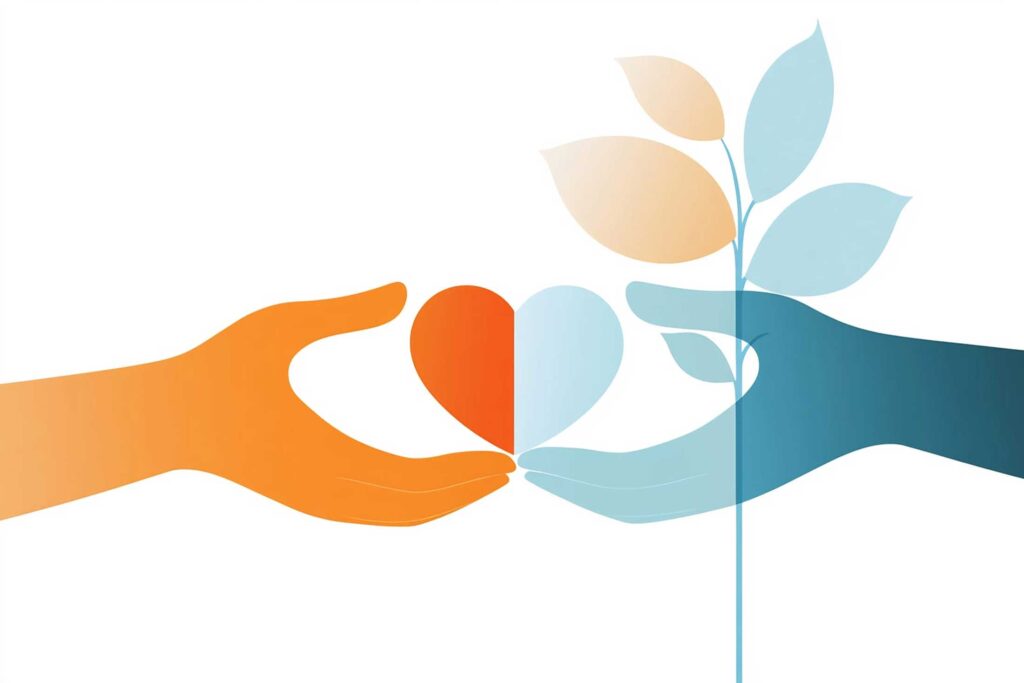

The wildfires currently raging in Los Angeles have once again brought devastation to communities, leaving behind scorched landscapes, displaced families, and heavy hearts. As we witness the destruction unfold, the emotional weight can feel unbearable, compounded by the uncertainty of when relief will come. Amid this chaos, many seek ways to process their grief, find resilience, and look to the future with hope. While emotional support tools and technology can provide practical help, it is often in faith and the enduring promises of Scripture that we find the strength to endure. This article explores how spiritual truths, alongside modern tools for emotional well-being, can guide us through these challenging times and remind us that hope rises, even from the ashes.
Natural disasters, particularly wildfires, have become an increasingly common reality for communities across the globe. From California to Australia, these devastating events reshape landscapes, disrupt lives, and leave behind a profound sense of loss. While the physical destruction is immediately visible in charred landscapes and damaged homes, the emotional impact runs far deeper, affecting individuals and communities in ways that can last for years.

The Hidden Toll of Natural Disasters
When disaster strikes, the immediate focus is the visible damage – homes reduced to ash, forests transformed into blackened plains, and communities displaced. However, beneath these tangible losses lies a more subtle but equally significant impact: the psychological and emotional toll on those affected. People experience not just the grief of losing possessions and homes but also the more profound anguish of seeing their sense of security and stability shattered.
Many survivors find themselves grappling with anxiety, depression, and post-traumatic stress. The constant uncertainty during fire seasons creates a perpetual state of vigilance that can be exhausting to maintain. Parents worry about their children's future, elderly residents fear losing their independence, and everyone struggles with whether to rebuild or relocate. These emotional challenges can persist long after the physical damage has been repaired.
Modern Support Systems in Times of Crisis
Today's world offers numerous resources for those facing such challenges. Professional counseling services, both in-person and virtual, provide crucial support for processing trauma and grief. Community organizations step forward to offer practical assistance, from temporary housing to rebuilding support. Social media platforms help connect affected individuals with resources and enable them to share their stories, finding solidarity in shared experiences.
Technology plays an increasingly important role in disaster response and recovery. Mobile apps provide real-time emergency alerts and evacuation information. Online platforms facilitate community organization and resource distribution. Mental health applications offer accessible tools for stress management and emotional support, making professional-grade coping strategies available to anyone with a smartphone.
The Power of Community Resilience
One of the most remarkable aspects of natural disasters is how they reveal the extraordinary capacity of communities to come together. In the face of devastation, neighbors help neighbors, strangers become friends, and local organizations mobilize with remarkable speed and efficiency. This collective response demonstrates humanity's inherent resilience and capacity for compassion.
Stories of community support emerge from every disaster: the restaurant owner who feeds evacuees, the teacher who maintains contact with students during displacement, and the neighbor who opens their home to those who have lost theirs. These acts of kindness create a web of support that helps sustain those affected through their darkest hours.

Finding Meaning and Purpose in Recovery
Recovery from natural disasters often involves more than just rebuilding physical structures – it becomes an opportunity for personal and community growth. Many survivors report discovering inner strength they never knew they possessed. Communities often emerge stronger, with new connections forged in the crucible of shared adversity.
This process of recovery can lead to positive changes in unexpected ways. Communities might implement better emergency preparedness plans, develop stronger support networks, or adopt more sustainable building practices. Individuals often report a renewed appreciation for life's essentials and a deeper connection to their neighbors and community.
The Role of Faith and Spirituality
For many people, faith and spiritual beliefs provide a crucial foundation during times of crisis. These frameworks offer comfort and perspective when facing overwhelming circumstances, whether through organized religion, personal spiritual practices, or philosophical beliefs. They can help people make sense of their experiences and find purpose in rebuilding.
Various spiritual traditions offer wisdom about resilience and renewal. Many contain stories of destruction and rebirth, teaching that growth often emerges from life's most challenging moments. These narratives can provide hope and context for those struggling to make sense of their losses.
Practical Steps for Building Resilience
While we cannot control when or where natural disasters might strike, we can take steps to build our resilience and prepare for challenging times:
Develop strong social connections within your community. These relationships often prove invaluable during crises. Regular engagement with neighbors and local organizations helps create a support network that can be activated when needed.
Practice self-care and stress management techniques during calmer times. This might include meditation, exercise, journaling, or other activities that help maintain emotional balance. Having these practices already in place makes them easier to access during stressful periods.
Create practical emergency plans and keep them updated. This includes maintaining emergency supplies, documenting important information, and ensuring all family members know what to do in various scenarios. Being prepared can help reduce anxiety and provide a sense of control.
Looking to the Future with Hope
Building resilience becomes increasingly important as our world faces environmental challenges. This includes not only preparing for potential disasters but also working to address their root causes through environmental stewardship and community action.
Communities that have faced natural disasters often emerge with valuable lessons to share. Their experiences help inform better building practices, more effective emergency responses, and stronger support systems. Each challenge overcome adds to our collective knowledge about how to face future difficulties with greater wisdom and preparation.
Practical Steps to Cultivate Hope and Resilience
During wildfire season, there are practical ways to combine emotional and spiritual support, helping us and those around us find hope and healing.

Summing up...
Natural disasters remind us of both our vulnerability and our strength. While we cannot prevent all catastrophes, we can choose how to respond. Through community support, practical preparation, and maintenance of hope, we can face these challenges with resilience and courage.
The path forward after a natural disaster is rarely straight or straightforward. It requires patience, perseverance, and often help from others. Yet, within this journey lies the potential for remarkable human connection, personal growth, and community transformation. By supporting one another and maintaining hope for the future, we can survive these challenges and emerge more substantially and united than before.
Remember that while natural disasters may destroy physical structures, they cannot break the human spirit when we stand together. In our collective response to these challenges, we often discover the very best of our human capacity for resilience, compassion, and renewal.